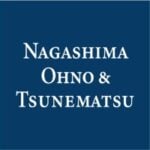-
Please briefly summarize your country's legislative framework for medicinal products (including biologicals), medical devices, food, and food supplements
Medicinal products and devices are regulated by the Therapeutic Goods Act 1989 (Cth) (Act) and associated regulations. Food and food supplements generally do not fall within these regulations, unless they meet the definition of a “therapeutic good” or where a claim is made relating to performance in sport or exercise (and the product is in tablet form).
The Therapeutic Goods Administration (TGA) is responsible for enforcing the Act and associated regulations. Products must meet quality, efficacy, safety and/or performance standards, and be manufactured at licensed premises. The TGA assesses and approves products to be included on the Australian Register of Therapeutic Goods (ARTG).
Foods and food supplements that are not regulated under the Act are regulated by other Australian laws and standards. These include the Australian Consumer Law,1 Food Standards Australia and New Zealand Act 1991 (Cth), Australia New Zealand Food Standards Code, which is given force in each State and Territory through local food legislation, Biosecurity Act 2015 (Cth), Imported Food Control Act 1992 (Cth) and the common law.
Footnote(s):
1 Competition and Consumer Act 2010 (Cth) Schedule 2.
-
With regards to medicinal products and medical devices, how is the regulatory process structured in your jurisdiction from R&D through market approval until post-marketing vigilance, and what rules does it follow? Please briefly describe.
Research and development involves pre-clinical and clinical trials. Research involving humans must be approved by a human research ethics committee (HREC) and, when involving an unapproved therapeutic good, the Therapeutic Goods Administration (TGA).2 A company that wishes to supply a new therapeutic good within Australia must obtain market authorisation from the TGA. A therapeutic good must not be marketed, imported, exported, manufactured or otherwise supplied in Australia until it is approved and included on the Australian Register of Therapeutic Goods (ARTG). There are some exceptions, which are specific, and advice should be obtained prior to relying on an exemption.
Once a therapeutic good is registered on the ARTG, it will be subject to post-market surveillance. Surveillance is important, as not all risks can be identified prior to registration. Risk management plans, adverse reporting and environmental scanning are used by the TGA for post-market monitoring of registered therapeutic goods.
Post-market surveillance of therapeutic goods also involves sponsor participation. The sponsor must hold information about ingredients, manufacturing and health benefits, provide the TGA with information about the therapeutic good on request and notify the TGA of any adverse events.
Footnote(s):
2 See the response to question 7 for further information on clinical trials in Australia.
-
What is the regulatory process for food supplements, from first notification to the competent authorities until post-marketing vigilance in your country, and what regulations are applicable here? Please briefly describe.
Foods and food supplements are regulated under the Therapeutic Goods Act 1989 (Cth) (Act) if considered a “therapeutic good” or where a claim is made relating to performance in sport or exercise (and the product is in tablet form).
The Therapeutic Goods Administration’s “Food-Medicine Interface Guidance Tool” can be used to determine whether a product is likely to be regulated by the Act. Food supplements captured by the Act are subject to the regulatory process described in the answer to question 2.
-
What are the ongoing obligations in your country after a marketing authorization for medicinal products has been obtained or a conformity assessment been carried out for medical devices?
Sponsors have ongoing responsibilities for medicinal products and medical devices (products) registered on the Australian Register of Therapeutic Goods (ARTG), including ensuring products remain compliant with prescribed standards, codes and/or regulations. If a sponsor becomes aware of any compliance issues concerning the product, the sponsor should report this to the Therapeutic Goods Association (TGA).
Sponsors have an obligation to collect and keep records of reports of adverse events, adverse drug reactions, serious adverse drug reactions and significant safety issues (i.e., pharmacovigilance issues). Similarly, adverse events and near-adverse events involving medical devices must be reported to the TGA. The mandatory reporting timeline differs depending on the type of incident. Different timelines apply for reporting these incidents.
The TGA may conduct audits of manufacturing facilities, and request information from sponsors and manufacturers of products, to assess compliance with the relevant standards, codes and/or regulations. Sponsors should maintain evidence of Good Manufacturing Practice (GMP) compliance for all manufacturing sites used in the manufacture of products, as they are responsible for these sites at all times. Additional obligations may apply to medical devices, e.g., periodic reporting of safety or performance data.
Medical device manufacturers must hold evidence demonstrating compliance with conformity assessment procedures and applicable essential principles. They also have an obligation to notify the TGA of issues relating to medical devices manufactured.
There are also ongoing fees associated with maintaining registration of therapeutic goods on the ARTG.
-
Which are the competent national authorities having the regulatory oversight over medicinal products, medical devices, food, and food supplements and what are their respective responsibilities?
The following authorities have regulatory oversight:3
- the Therapeutic Goods Administration;
- the Australian Competition and Consumer Commission;4
- the Australian Department of Health and Aged Care, responsible for managing the Pharmaceutical Benefits Scheme, Prostheses List, and other government-funded reimbursement of medicinal products and services;
- the Departments of Health in each of the State and Territories of Australia.
Foods and food supplements that are not therapeutic goods are chiefly regulated by State and Territory health departments, which implement and enforce the Food Standards Australia New Zealand (FSANZ) Code.
Footnotes:
3 See the response to question 3 for information on when foods and food supplements are regulated by the TG Act.
4 See the response to question 1 for more information on the ACL.
-
Please briefly describe the procedure of challenging regulatory decisions (e.g., denial of marketing authorization) made by the competent regulatory authority in relation to medicinal products, medical devices, and food supplements.
Reviewable initial decisions made by the Therapeutic Goods Administration (TGA) can be reconsidered by the Federal Minister of Health (Minister):
- an initial decision specified in section 60 of the Therapeutic Goods Act 1989 (Cth), such as a declaration that a product is a therapeutic good, decisions relating to conformity assessment certificates, medical device exemptions and other aspects of the registration of a product on the Australian Register of Therapeutic Goods;
- an initial decision specified in regulation 48 of the Therapeutic Goods Regulations 1990, such as decisions relating to the extension or revocation of orphan drug designations, and application of fees and charges; and
- an initial decision specified in regulation 10.7 of the Therapeutic Goods (Medical Devices) Regulations 2002, such as decisions about conformity assessment body determinations.
These decisions may be reviewed by application to the Administrative Review Tribunal (ART). The ART may reconsider the facts, policy and law underlying the original decision and determine the correct or preferable decision by “stepping into the shoes” of the original decision maker.
The Pharmaceutical Benefits Advisory Committee (PBAC) is an independent advisory committee that provides advice to the Minister regarding inclusion of a medicine on the Pharmaceutical Benefits Scheme (PBS) or a vaccine on the National Immunisation Program (NIP). The Australian Technical Advisory Group on Immunisation provides advice to the PBAC on the clinical effectiveness of a vaccine in a population wide program.
The Medical Services Advisory Committee (MSAC) is an independent advisory committee that provides advice to the Minister regarding what medical services should be listed on the Medicare Benefits Schedule (MBS).
Merits review is not available for decisions or recommendations made by the PBAC or MSAC. If either committee rejects a sponsor’s application for a therapeutic good to be listed on the PBS, NIP or MBS the sponsor can either resubmit the product to the PBAC or MSAC for reconsideration (fees apply) or seek judicial review of the decision.
Judicial review involves applying to a superior court (for decisions of the PBAC or MSAC, this is the Federal Court of Australia) to determine whether the decision was legal, reasonable and fair. Judicial review does not permit the courts to determine whether the decision was the “correct and preferable decision”; courts can only determine whether the decision was properly made in accordance with the law. For example, if the decision-maker acted without legal authority, if jurisdictional error occurred or if there was an error of law made by the relevant decision-maker, that decision may be amenable to judicial review.
Strict time limits apply for merits review or judicial review of a government or regulatory decision. Impacted sponsors and manufacturers should obtain advice and develop a strategy prior to submitting any applications to ensure those timelines can be met in the event of an adverse decision.
-
Please briefly describe the legal framework and the relevant regulatory procedure (e.g., application process, requirements, approval, denial) that applies in your jurisdiction to clinical trials for medicinal products and medical devices.
Clinical trials for unapproved therapeutic goods must be approved by the Therapeutic Goods Administration (TGA). Any research involving humans must be approved by a Human Research Ethics Committee (HREC). The National Statement on Ethical Conduct in Human Research, which is published by the National Health and Medical Research Council (NHMRC), sets out the criteria considered by HRECs when considering approvals of research involving humans..
The supply of an unregistered therapeutic good in Australia is both a criminal and civil penalty offence under the Therapeutic Goods Act 1989 (Cth).5 Approval from the TGA of the clinical trial provides an exemption permitting a limited supply of an unregistered therapeutic good for the clinical trial. There are two TGA schemes under which such trials may be conducted:
- the Clinical Trial Notification (CTN) Scheme; and
- the Clinical Trial Approval (CTA) Scheme.
The CTN Scheme is often used for earlier phase clinical trials where there is sufficient pre-clinical information available. The CTA Scheme is typically used for high-risk or novel therapeutic goods (e.g., gene therapy) where there is limited or no information relating to safety, and is also mandatory for clinical trials involving Class 4 biologicals.
Only a HREC that operates in accordance with the NHMRC’s National Statement on Ethical Conduct in Research Involving Humans may approve clinical trials of therapeutic goods.
Footnote(s):
5 Therapeutic Goods Act 1989 (Cth) s 9L. The maximum civil penalty for an individual under this section is 300 penalty units and 3,000 penalty units for a body corporate.
-
Is there a public database for clinical trials in your country, and what are the rules for publication?
The Australian New Zealand Clinical Trials Registry (ANZCTR) is an online public register of clinical trials. The ANZCTR accepts both interventional and observational studies for registration from all countries in various therapeutic areas, such as pharmaceuticals, surgical procedures, medical devices, and treatment and rehabilitation strategies.
Registration on the ANZCTR is voluntary and free. Sponsors are encouraged to register a clinical trial on the ANZCTR to ensure transparency and publication requirements are met, as may be required by journals (e.g., the International Committee of Medical Journal Editors) and international health organisations (e.g., the World Health Organisation).
Once registered, a clinical trial remains visible to the public and cannot be removed from the register.
-
Please briefly summarize the rules that must be observed in your jurisdiction when using data from clinical trials?
Clinical trials must comply with the Privacy Act 1988 (Cth) and Australian Privacy Principles (APP) (Privacy Laws), and applicable State or Territory health records legislation, to the extent clinical trials data includes or incorporates any personal information.
Data from clinical trials comprising health information must be collected, used and disclosed in accordance with the Privacy Laws. If clinical trial data is de-identified, it will no longer being subject to the Privacy Laws.
Entities must consider the primary purpose of collection. If the primary purpose for collecting information is conducting a clinical trial, the entity will be permitted to use and disclose such information for that purpose.6 Entities will generally be required to obtain consent from trial participants for collecting sensitive information.7
The National Health and Medical Research Council (NHMRC) issued the National Statement on Ethical Conduct in Human Research, which provides that individuals have a right to informed consent and the ability to withdraw from clinical trials at any time, encourages data minimisation, and requires the secure collection, sharing and handling of personal information collected through clinical trials.
Under the NHMRC guidelines, a waiver of informed consent from clinical trial participants may only be granted by a Human Research Ethics Committee.
The Therapeutic Goods Act 1989 (Cth) also establishes a data protection scheme for clinical trial data that is submitted in support of a sponsor’s application to register or list their medicines on the ARTG. The scheme protects that information for 5 years starting from the date the medicine was included in the Australian Register of Therapeutic Goods.
Footnotes:
6 Australian Privacy Principle 6.1.
7 Australian Privacy Principle 3.3.
-
Are there any trends and/or legislative proposals in your country on digitizing the process of conducting clinical trials (e.g., digitalization of the application process, decentralization of clinical trials)?
In Australia, the COVID-19 pandemic accelerated the digitalisation of clinical trials. The use of technology overcomes previous logistical and budgetary constraints on clinical trial participation. The recent roll-out of decentralised clinical trials has supported hybrid patient recruitment models.
National consultations conducted from September 2021 to July 2022 indicated broad support for the Federal Government’s proposal to establish the National Clinical Trials Front Door.
Health Data Australia (HDA) was launched in July 2023. HDA is a platform facilitating the sharing and reuse of clinical trial data for other studies.
-
What are your country's legal requirements for the authorization of manufacturing plants for medicinal products, medical devices, food, and food supplements? Please briefly describe.
Manufacturers of therapeutic goods in Australia must hold a manufacturing licence. This includes the manufacture of active pharmaceutical ingredients (APIs), biologicals (excluding Class 1 biologicals), human blood, blood components and haematopoietic progenitor cells. If the manufacturer is located overseas, the Australian sponsor must ensure a Good Manufacturing Practice (GMP) licence is obtained before supplying the products in Australia.
Medicines, APIs and sunscreens have additional requirements under the pharmaceutical cooperation scheme’s guide to GMP. Manufacturers of biologicals (including vaccines) must comply with its GMP licence and the Australian Code of Good Manufacturing Practice for Human Blood and Blood Components, Human Tissues and Cellular Therapy Products, which sets out best practice on ethically manufacturing biologicals.
Manufacturers of medical devices must comply with the essential principles.
Once a manufacturing licence or GMP licence is obtained, the manufacturer will be subject to ongoing audits. The Therapeutic Goods Administration may conduct regular inspections of the site of manufacture to ensure compliance with the conditions of the applicable licence.
-
Please briefly describe the typical process of distributing medicinal products, medical devices, and food supplements in your country, encompassing, if applicable, the wholesale distribution of products.
Retail distribution of medicines is determined by its scheduling on the Poisons Standard. The medicine’s scheduling will determine whether it may be sold in retail stores, is pharmacy only or is available via a prescription only.
For wholesale distribution, an organisation must be licensed to supply therapeutic goods by wholesale in each State or Territory in which it intends to operate.
Wholesale licences are subject to conditions imposed by the relevant licensing authority or prescribed by regulations made under the Therapeutic Goods Act 1989 (Cth). These conditions may include keeping supply records and storage requirements.
The sponsor of the therapeutic good must ensure the wholesaler holds a licence and ensure its compliance with the Australian Code of Good Wholesaling Practice for Medicines.
-
Please briefly describe the pricing and reimbursement rules, if any, for medicinal products, medical devices, and food supplements in your jurisdiction?
Australia provides subsidies for some medicinal products and health services.
The Pharmaceutical Benefits Scheme (PBS) subsidises the cost of medicines. Patients pay a co-payment toward the cost of each medicine listed on the PBS and the Federal Government pays the remainder. An application to the Pharmaceutical Benefits Advisory Committee is required to list a new medicine on the PBS.
The PBS is established via two formularies (F1 and F2) that largely split between innovative, patented medicines and generic medicines with multiple brands.
Statutory price reductions are automatically applied to the listed price of a medicine on the PBS. These include at the date of first listing of a second brand, anniversary price cuts and under a process known as price disclosure. The operation of the statutory pricing regime can be complex and is established via the National Health Act 1958 (Cth).
Immunisations are subsidised through the National Immunisation Program (NIP). A sponsor is required to obtain advice from the Australian Technical Advisory Group on Immunisation and make an application to the Pharmaceutical Benefits Advisory Committee to list a new vaccine on the NIP. Immunisations are also subject to separate tender negotiations directly with the Department of Health. Occasionally, some State and Territory Governments will directly procure immunisations that are unavailable for reimbursement via the NIP.
Medicare is a publicly-funded health care insurance scheme. Under the Scheme, rebates or benefits are provided to consumers of medical services, including diagnostic testing.
To receive a subsidy via these programs, the medicines and health services must undergo a Health Technology Assessment. If a therapy is unable to demonstrate that it is cost effective based on scientific evidence, it will not be recommended for listing.
Private health insurance products are also available for services not covered by Medicare or the PBS, including some prescription medicines. The Prostheses List is a list of medical devices for which private health insurers are required to pay a benefit when a member has the relevant coverage. For example, if a member of a health fund has orthopaedic cover and needs a hip replacement, the fund must pay the minimum benefit for any artificial hip on the Prostheses List.
-
What legislative framework applies to the advertising for medicinal products, medical devices, and food supplements in your country?
Therapeutic goods advertising must comply with the Therapeutic Goods Act 1989 (Cth), the Therapeutic Goods Advertising Code, the Medicines Australia Code of Conduct (MA Code) (in the case of prescription pharmaceutical products) and the Australian Consumer Law (ACL).8
Therapeutic goods advertising must not mislead the consumer or create unrealistic expectations about product performance. Advertising should be consistent with relevant current public health campaigns.
The MA Code applies to the advertising of prescription medicinal products. It is prohibited under Australian law to advertise prescription medicinal products direct to the public. However, promotion to healthcare professionals is permitted. The MA Code can be found here: https://www.medicinesaustralia.com.au/code/about-the-code/.9
The ACL regulates the accuracy and fairness of marketing, advertising and selling to consumers. The basic requirements of the ACL are that a business should be honest in their dealings, be able to prove any claim they make, should only make true, accurate claims based on reasonable evidence, and reviews for goods and services should be independent and genuine.
Food supplements that are not therapeutic goods are regulated by other laws and codes. Relevant to advertising, these include the ACL, Food Standards Australia and New Zealand Act 1991 (Cth) and Australia New Zealand Food Standards Code (Food Code). The Food Code and its related laws regulate a broad range of activities in relation to food, including labelling requirements of packaged foods, country of origin labelling, health claims, mandatory warnings and advisory statements.
Footnote(s):
8 Competition and Consumer Act 2010 (Cth) Scheule 2.
9 Medicines Australia, Code of Conduct 19 Ed (26 November 2019) <https://www.medicinesaustralia.com.au/wp-content/uploads/sites/65/2020/11/20200108-PUB-Edition-19-FINAL.pdf>.
-
What laws apply to patents and trademarks for medicinal products, medical devices, and food supplements in your country?
The Patents Act 1990 (Cth) (Patents Act) and Trade Marks Act 1995 (Cth) (Trade Marks Act) are the applicable laws governing patents and trade marks in Australia.
Patents
For an invention to be protected by a patent, it must satisfy the requirements of a “patentable invention” under the Patents Act. An invention must be a method of manufacture, novel relative to the prior art base, involve an inventive step relative to the prior art base, be useful, not have been commercially exploited prior to the priority date, and must not be a human being or biological process for their generation.10
The patentee of a pharmaceutical patent may apply for an additional five-year extension of the standard patent term (20 years) where it satisfies certain conditions. These conditions include that the patent includes at least one claim covering one or more pharmaceutical substances, the goods containing or consisting of the pharmaceutical substance are registered on the Australian Register of Therapeutic Goods, and the first regulatory approval of the pharmaceutical substance occurred more than five years after the effective filing date of the patent.11
Trade Marks
A logo, symbol or sign is often used to indicate the trade origin of goods or services. Registration of that logo, symbol or sign as a trade mark gives the owner proprietary rights over the mark and the right to use the mark for the purposes of indicating they are the trade origin of their goods or services. The owner of the trade mark also has the right to prevent others from using their mark as a trade mark, or from using marks substantially identical or deceptively similar to the mark.
A logo, symbol or sign must be used or intended to be used as a trade mark, and be capable of distinguishing goods or services dealt with or provided in the course of trade, to be registrable under the Trade Marks Act.12
An application to register a trade mark for a medicinal product is likely to be rejected if it is identical or deceptively similar to a notified International Non-proprietary Name (INN) (or generic name) or a notified INN Stem. INNs are globally co-ordinated by the World Health Organisation and are non-proprietary names used to identify pharmaceutical substances or active pharmaceutical ingredients. A trade mark application to register an INN as a brand name for a medicinal product will therefore be rejected for lack of distinctiveness.
Footnote(s):
10 Patents Act 1990 (Cth) s 18.
11 Patents Act 1990 (Cth) s 70.
12 Trade Marks Act 1995 (Cth) s 17.
-
Please briefly describe how patent infringements in relation to medicinal products and medical devices are addressed in your jurisdiction, including possible defense strategies and legal proceedings against patent infringements.
Patent litigation involving therapeutic goods often involves complex scientific or technical questions. Australian courts use case management tools to ensure these complex proceedings are conducted efficiently. The cases are ordinarily heard by the Federal Court of Australia.
General document discovery is not allowed in all patent cases unless permission is granted for discovery of a subset of documents. In some cases, the parties may produce a joint document explaining the technical background to the patent in question. Expert evidence may also need to be given orally, and on a limited number of issues, or an expert may be engaged to prepare a single report to the Court. The parties may also be requested to prepare an agreed glossary of terms for clarity on the key technical terms. The Court may also expedite the case, if appropriate, by appointing a judge with sufficient time to devote to the proceedings.
Defence strategies to patent infringement claims often include a cross-claim seeking to invalid the patent. If validity of a patent claim is in issue, the court will request to be informed at an early state whether the dispute relates to the priority date of the claim.
-
Does your jurisdiction provide for restrictions on the use of trademarks for medicinal products, medical devices, food, and food supplements?
There are no specific restrictions on the use of trade marks for medicinal products, medical devices, foods or food supplements. Trade marks for these products are subject to the usual trade mark restrictions, for instance a trade mark application may be rejected if the mark:
- includes prohibited or prescribed signs;13
- cannot be represented graphically;14
- is not capable of distinguishing the goods for which the trade mark is sought from other’s goods;15
- includes scandalous matter or its use would be contrary to law;16 or
- is substantially identical or deceptively similar to an earlier trade mark application or registration, and the goods or services of both are the same, similar or related,17 or
- use in relation to the goods for which it is sought would be likely to deceive or cause confusion.18
A trade mark application for a medicinal product may also be rejected for the reasons specified in the response to question 15.
Footnote(s):
13 Trade Marks Act 1995 (Cth) s 39.
14 Trade Marks Act 1995 (Cth) s 40.
15 Trade Marks Act 1995 (Cth) s 41.
16 Trade Marks Act 1995 (Cth) s 42.
17 Trade Marks Act 1995 (Cth) s 44.
18 Trade Marks Act 1995 (Cth) s 43.
-
Please briefly describe the product liability regime for medicinal products, medical devices, and food supplements in your country.
Product liability claims may be brought under the common law tort of negligence, contract or breach of the Australian Consumer Law (ACL).19 The Therapeutic Goods Administration (TGA) has powers under the Therapeutic Goods Act 1989 (Cth) in relation to enforcement, including product recalls and cancelling registrations on the Australian Register of Therapeutic Goods.
A person may be negligent at common law for failing to take precautions against a risk of harm if the risk was foreseeable, the risk was not insignificant, and a reasonable person in the person’s position would have taken those precautions in the circumstances. It is a fault-based assessment. A successful negligence claim may entitle an individual to damages for economic loss, gratuitous attendant care services, loss of capacity to provide domestic services, loss of superannuation entitlements, or non-economic loss.
Class actions regimes are available where a product defect has impacted a class of claimants.
The ACL also upholds consumer guarantees, safety standards and safety defects. Consumers have a right to expect certain things when they buy a good or service. The ACL sets out the remedies relating to guarantees, including requiring the supplier to remedy the failure within a reasonable timeframe.20 If the consumer requires the supplier to remedy the failure (where the failure is minor), the supplier may repair the goods, replace the goods with identical goods, or refund the amount paid by the consumer.
If goods do not comply with safety standards or information standards, the person who has suffered or is likely to suffer loss or damage is entitled apply for compensation. Manufacturers may be liable to pay damages to the person who has suffered, or is likely to suffer, as a result of safety defects.
Until recently, Australia had a COVID-19 Vaccines Claims Scheme. The Scheme covered losses or expenses of $1,000 and above due to administration of a TGA-approved COVID-19 vaccine, or due to an adverse event recognised to be caused by a COVID-19 vaccination. It was a no-fault compensation scheme and closed to claims on 30 September 2024.
Footnote(s):
19 Competition and Consumer Act 2010 (Cth)) Schedule 2.
20 Competition and Consumer Act 2010 (Cth)) Schedule 2, Ch 5, Part 5-4.
-
Please provide a short overview of risks of liability (criminal liability, serious administrative / civil liability) and enforcement practice with regards to medicinal products (including biologicals), medical devices, foods, and food supplements.
There are numerous civil penalties and criminal offences that may apply where a sponsor or manufacturer fails to comply with the Therapeutic Goods Act 1989 (Cth) (Act), and associated codes and regulations. Sponsors and manufacturers can both be liable for compliance failures.
Serious non-compliance with the Act is often a criminal offence. Examples of serious non-compliance include providing false or misleading information to register a prescription medicine, dealing with a medical device non-compliant with the essential principles and which has harmed or may harm an individual, and supply of a medicine that does not comply with standards and has or may cause harm. Such offences may result in up to 5 years imprisonment and/or a fine of up to $1,320,000.
Civil penalties also apply to serious non-compliance and general non-compliance with the Act. Examples of non-compliance include failure to report a medicine shortage or discontinuation, advertising a therapeutic good in contravention of the Code, and the supply of a medicine that does not comply with applicable standards. The maximum civil penalties applicable are $1,650,000 (for an individual) or $16,500,000 (for a corporation).21
The Therapeutic Goods Administration (TGA) may consider alternative routes to ensure compliance prior to issuing penalties or pursuing criminal proceedings, except in the case of repeated breaches or where a breach may cause harm. The TGA may issue an infringement notice or negotiate an enforceable undertaking with the responsible entity.
Footnote(s):
21 A penalty unit is $330 as at 12 February 2025.
-
Does your jurisdiction provide for a specific legislative and regulatory framework for digital health applications (e.g., medical apps)? If yes, please briefly describe the relevant framework.
Medical devices that incorporate or are software (including mobile applications) are regulated if they meet the definition of a therapeutic good under the Therapeutic Goods Act 1989 (Cth).22 Any technology intended to be used for diagnosis, prevention, monitoring, prediction, prognosis or treatment of a disease, injury or disability, alleviation of or compensation for an injury or disability, investigation of the anatomy or of a physiological process, or control or support of conception, meets the definition of a therapeutic good.
Certain software-based medical devices may be excluded or exempted from regulation. Excluded software is neither considered a medical device nor regulated by the TGA, while exempted software is considered a medical device but is not subject to all the regulatory obligations and is not required to be registered on the Australian Register of Therapeutic Goods.
The TGA does not regulate software used for display of guidelines, information or resources, for registration or viewing, or recording or tracking of results, to facilitate telehealth consultations, or to generate or update a digital health record.
The Australian Consumer Law may apply to digital health applications that establish a direct relationship between the supplier and consumer.23 Digital health applications that collect, use, store or disclose health information (a subset of personal information that requires a higher level of protection) will be subject to the Privacy Act 1988 (Cth).
Footnote(s):
22 See the response to question 1 for a comprehensive summary of the regulatory framework.
23 Competition and Consumer Act 2010 (Cth)) Schedule 2. See the response to question 1 for information about the ACL.
-
Does your jurisdiction provide for laws or certain legal measures to ensure the supply of medicinal products and medical devices, or are such rules envisaged in the future? If yes, please briefly describe those rules.
Sponsors must report any current or anticipated shortages, and decisions to permanently discontinue the supply, of a reportable medicine in Australia to the Therapeutic Goods Administration (TGA).
If the shortage will have a critical impact, it must be reported to the TGA as soon as possible but no later than two business days after the sponsor becomes aware of the shortage. Otherwise, it must be reported within 10 business days of the sponsor becomes aware of the shortage. To safeguard against shortages, pharmaceutical companies are required to hold 4 to 6 months’ worth of stock of certain brands of pharmaceutical items.24
Discontinuation of a medicine is a permanent shortage. A discontinuation will have a critical impact if the reportable medicine:
- is on the medicines watch list; or
- no registered substitute is available, registered substitutes are available but insufficient to meet the increased demand due to the discontinuation, or the discontinuation poses a risk to the health or life of those who require the medicine.
The reporting timeline depends on how the discontinuation is classified.
Footnotes:
24 National Health (Minimum Stockholding) Amendment Determination (No. 1) 2024.
-
Are there any specific compliance standards in your jurisdiction for the marketing of medicinal products and medical devices (e.g., codes of conducts of industry associations, etc.)? If yes, please give a brief overview of the relevant standards.
Marketing of medicinal products and medical devices in Australia must comply with the requirements discussed in question 14.
-
Please state 3-5 key decisions by courts or regulatory authorities that have been issued recently and that are relevant for the life sciences sector.
This section considers four recent cases relevant to the life sciences sector.
Patent Term Extensions
Novartis AG v Pharmacor Pty Limited (No 3) [2024] FCA 1307 (13 November 2024)
In Novartis AG v Pharmacor Pty Limited (No 3) [2024] FCA 1307, the Federal Court struck down a patent term extension (PTE) granted to Novartis for its heart failure drug Entresto.
In 2016, Novartis secured a PTE for their drug Entresto, extending the patent’s expiry date from 2023 to 2028, the maximum possible extension of 5 years.
Subsequently, Novartis commenced patent infringement proceedings in respect of Pharmacor’s intended supply of its generic heart failure drug, Valtresto, to the Australian market.25 Pharmacor cross-claimed seeking revocation of Novartis’ patent and for the extension of term to be removed because it was invalid.
Novartis claimed that Pharmacor’s product, Valtresto, infringed claim 1 of its patent because its claim should be construed broadly to include any form of combination of valsartan and sacubitril. However, the Court rejected Novartis argument for a broad construction, determining Valestro did not infringe claim 1 as it did not contain two separate salts as required by claim 1 of the patent.
The Court then considered whether Entresto satisfied the required conditions under section 70 of the Patents Act and whether the PTE for Entresto was valid.26
Justice Yates held that under ss70(2) of the Patents Act, the pharmaceutical substance in Entresto was TSVH – which was not disclosed or claimed in claim 1 of the patent. His Honour determined that TSVH was a single salt complex, and that TSVH was not disclosed or even envisaged by the patent specification relied upon in respect of Entresto. The Court held that the specific form of the substance, as used in the product, must be disclosed and claimed in the patent. As it was not, Novartis’ PTE was invalid.
BMS and Ono Pharmaceutical sought judicial review by the Federal Court of Australia after the Australian Patents Office (APO) rejected their patent term extension (PTE) application for cancer drug, Opdivo, under Section 70 of the Patents Act 1990 (Cth).
The APO ruling rejected the PTE application because it had formed a view that an application must be filed within six months of the first inclusion on the Australian Register of Therapeutic Goods (ARTG) any pharmaceutical substance falling within the claims of the patent. The APO (erroneously) believed this extended to pharmaceutical substances of third parties and not just the patentee’s goods. In this case, MSD, competitors to BMS and Ono Pharmaceuticals, had registered Keytruda with the ARTG more than six months prior to the application for extension, and the APO determined that the registration of Keytruda was the relevant date.
At first instance, BMS and Ono were successful, with the Federal Court determining that the PTE should have been based on the first regulatory approval date.27
The Commissioner successfully appealed this decision. The Full Court determined that first regulatory approval date is “the date of commencement of the first inclusion in the ARTG of goods that contain, or consist of, [the relevant] substance”,28 regardless of the sponsor of the relevant goods on the ARTG.
Procedural Fairness in Government Decision Making
Montagner and Secretary, Department of Health and Aged Care (Freedom of Information) [2023] AATA 1443 (25 May 2023)
Specialised Therapeutics Australia (STA) applied to the Medical Services Advisory Committee (MSAC) for funding of its gene expression profiling test, which predicted the likelihood of adjuvant chemotherapy benefits in breast cancer patients. MSAC rejected the application.
STA applied under the Freedom of Information Act 1982 (Cth) for the minutes of MSAC’s meeting in relation to its application. While STA was provided 23 documents, information was redacted for reasons including that disclosure would have a substantial adverse effect on the efficient operation of a government agency (Decision). STA’s application for internal review of the Decision was declined and it applied for review by the Australian Administrative Tribunal (AAT).
The AAT determined that MSAC did not afford STA with procedural fairness during the decision-making process, as it was discovered STA was not given an opportunity to respond to a healthcare professional’s submission to MSAC about its application. This decision confirms that MSAC owes obligations of procedural fairness to sponsors when making decisions for reimbursement. MSAC also varied the Decision, though much of the documents remained redacted.
Third Party Damages in Patent Cases
Commonwealth of Australia v Sanofi [2024] HCA 47 (11 December 2024)
On 11 December 2024, the majority of the High Court upheld the Full Federal Court’s decision in this long running litigation, with the Commonwealth losing their final appeal in the clopidogrel PBS claim.
In 2007, Sanofi obtained an interlocutory injunction to block Apotex from entering the market with a generic version of clopidogrel, a platelet inhibitor prescribed to lower heart disease and stroke risk. The injunction granted to Sanofi was alleged to delay Apotex’s market-entry of generic clopidogrel products by approximately 2 years.
When a party is granted an interlocutory injunction, it provides an undertaking as to damages to the court. That undertaking provides that the applicant is required to compensate any third party who suffers loss by reason of the grant of the injunction, if the applicant for an injunction is ultimately unsuccessful in its case.
In this case, Sanofi was unsuccessful in its litigation against Apotex. The Commonwealth sought to rely on the undertaking as to damages against Sanofi, alleging that it was a third party who had suffered loss by reason of the grant of the injunction.
Medicines listed on the PBS are subsidised by the Commonwealth Government. Once a medicine is listed on the PBS, it is subject to statutory price reductions. Statutory price reductions include:
- anniversary price cuts in the 5th, 10th and 15th years following a medicine’s first listing on the PBS; and
- at the date that the first new brand of the medicine that is bioequivalent or biosimilar and has the same manner of administration is listed on the PBS (i.e. when a medicine first moves from the F1 formulary to the F2 formulary – i.e. ordinarily when the first generic drug enters the market).
Statutory price reductions deliver cost savings to the Commonwealth Government in respect of its PBS expenditure.
The Commonwealth unsuccessfully sought to recover part of its expenditure on Plavix under the PBS during the period when Apotex was restrained by the grant of an interlocutory injunction from entering the market with its generic versions.29 The Commonwealth’s claim was significant and exceeded AUD $325 million.
The primary judge and Full Court on appeal determined that Commonwealth had not established that Apotex would have listed and launched its generic medicine in the absence of the injunction. On final appeal to the High Court of Australia, a 3:2 majority of the High Court determined the appeal in Sanofi’s favour. The majority of the court determined that the Commonwealth failed to demonstrate that the findings of the primary judge and Full Court was plainly wrong or to establish sufficient grounds to disturb the longstanding principle that appellate courts will not disturb the findings of fact made at first instance absent special or exceptional circumstances such as plain injustice or clear error. The Commonwealth failed to establish such circumstances.
As this case failed on the facts, it remains possible that the Australian Government may pursue loss to the PBS budget suffered as a result of an interlocutory injunction granted in patent proceedings. Companies should factor this risk into any decision making regarding the provision of an undertaking as to damages to the Court when seeking an interlocutory injunction to restrain the entry of a generic competitor.
TGA Enforcement
Secretary, Department of Health v Medtronic Australasia Pty Ltd [2024] FCA 1096 (19 September 2024)
The Federal Court recently ordered Medtronic Australasia Pty Ltd (Medtronic) to pay $22 million for unlawfully supplying bone graft kits between 2015 and 2020. 30
Proceedings were commenced by the TGA against Medtronic in 2021 after it was found that Medtronic breached the Therapeutic Goods Act 1989 (Cth) (TGA) by supplying unregistered therapeutic goods in Australia. Medtronic’s ‘Infuse Bone Graft Kit’ was listed on the Australian Register of Therapeutic Goods (ARTG) as a ‘Device’ that included both a ‘Kit’ and a ‘Cage’.
Due to high demand, Medtronic supplied 16,267 units of the Kit without the Cage to over 100 Australian hospitals. Since the Kit itself was not registered on the ARTG, but rather the whole device, Medtronic’s supply of the Kit alone was in contravention of s19D(1)(iv) of the TGA Act.
The $22 million penalty is the largest ever imposed for a contravention of the TGA Act, serving as a reminder to sponsors and others in the industry to take their obligations under the TGA seriously.
Footnote(s):
25 Novartis AG v Pharmacor Pty Ltd (No 2) [2023] FCA 963
26 Patents Act 1990 (Cth)
27 Ono Pharmaceutical Co. Ltd v Commissioner of Patents [2021] FCA 643.
28 Ono Pharmaceutical Co. Ltd v Commissioner of Patents [2021] FCA 643 [123].
29 Commonwealth of Australia v Sanofi (formerly Sanofi-Aventis) (No 5) [2020] FCA 543.
29 27 Secretary, Department of Health v Medtronic Australasia Pty Ltd [2024] FCA 1096
30 Commissioner of Patents v Ono Pharmaceutical Co. Ltd [2022] FCAFC 39 (18 March 2022)
-
What, if any, are the key legal and regulatory trends in your jurisdiction with regards to the digitalization of the local healthcare system and with regards to the use of artificial intelligence in the life sciences sector? Please briefly describe.
The COVID-19 pandemic led to increased use of telehealth programs to reduce the risks of infection. Information collected via telehealth is subject to the same compliance obligations that apply in person. Australian Privacy Principle 11, for instance, requires an entity take reasonable steps to protect personal information against misuse, interference and loss, and unauthorised access, modification and disclosure.
Australia has seen an increase in digitisation of health services. Australia has a national electronic health record system (My Health Record program), which commenced in 2012. As of January 2024, the program manages more than 23.5 million records. The Australian Digital Health Agency who administers the program is subject to various compliance obligations including under the Privacy Act 1988 (Cth) (Privacy Act), My Health Records Act 2012 (Cth) and Healthcare Identifiers Act 2010 (Cth).
Additionally, the Pharmaceutical Benefits Scheme now has electronic prescriptions, and delivery infrastructure and services. As patient identification details for electronic prescriptions, organisations involved must comply with relevant obligations under the Privacy Act and Spam Act 2003 (Cth) for those issuing prescriptions via SMS or email.
The life sciences industry is also investing in artificial intelligence (AI). The National Policy Roadmap for AI in healthcare includes a strategy for the adoption of AI across industry. The Australian Government recently published its response to its consultation paper on “Safe and responsible AI in Australia”. The response commented on “high-risk” activities which will likely attract regulation, such as technologies impacting individuals or “the safety of people’s lives”. The government has an interest in high-risk activities from a privacy perspective, indicating a willingness to require technologies obtaining biometric information to undergo privacy impact assessments.
-
Please briefly highlight 3-5 key developments or trends in your jurisdiction with regards to the life sciences sector as you consider them relevant. This may include legislative proposals, market activity, etc.
Parliamentary Inquiry into approval processes for new drugs and novel medical technologies in Australia
In November 2021, the Parliamentary Standing Committee on Health, Aged Care and Sport released its report following its inquiry into the approval processes for new drugs and novel medical technologies (the Inquiry). The Inquiry examined the opportunities to deliver better healthcare for Australians by improving the regulatory and health technology assessment (HTA) processes for both medicines and related technologies.
The Inquiry committee made numerous recommendations, including that:
- the HTA process for cell and gene therapies be simplified;
- the assessment process for the Life Savings Drug Program be streamlined and delays in access to treatments reduced by ensuring that a sponsor only need lodge one application for reimbursement; and
- the Department and the National Blood Authority reform the HTA processes for blood products to provide better alignment with broader system.31
The Inquiry, and the latest strategic agreement between the Australian Government and Medicines Australia, catalysed the Health Technology Assessment Policy and Methods Review (Review)
The recommendations arising from the Review are expected to be implemented by the end of 2024.
Efficient Funding of Chemotherapy
The Efficient Funding of Chemotherapy (EFC) program was reviewed recently for its relevance to the production, distribution, preparation, administration and remuneration of cancer medicines, and to determine whether enhancements could be made to improve efficiency and patient access to medicines.
The review found that the EFC was an appropriate policy response for the specialised nature of cancer care and to ensure access to cancer medicines via the PBS. The full report can be found here: https://www.health.gov.au/resources/webinars/efficient-funding-of-chemotherapy-efc-review-final-report-webinar-1-february-2024.
Prostheses List Reform
The Prostheses List (List) is a list of medical devices for which health insurers are required to pay a benefit when a member has the relevant private health insurance coverage.
The Federal Government commenced work on reforming and improving the List in 2021. Key features of the reforms include:
- clarifying the scope of the List by defining which prostheses are eligible for inclusion and removing ineligible items;
- regrouping the items on the List to better align devices with similar intended use or health outcomes;
- streamlining new device listings and reviewing the functions of the List’s Advisory Committee;
- improving post-listing activities, such as reviews and compliance activities; and
- updating existing cost recovery arrangements.
Eighth Community Pharmacy Agreement
The Eighth Community Pharmacy Agreement (8CPA) was implemented on 1 July 2024 and will remain in effect until 30 June 2029. $24.66 billion in funding is allocated under the 8CPA.
The negotiations focused on the 60-Day Dispensing policy, which allows patients with chronic conditions to be prescribed 60-day prescriptions, not 30-day prescriptions, at no additional cost. Multiple stakeholders in the pharmaceutical community have raised concerns surrounding funding cuts that come with the 60-Day Dispensing. Addressing funding cuts for both patients and community pharmacies is also a main concern of the Pharmacy Guild. A compromise was reached in the 8CPA, with an additional AHI payment to community pharmacies for dispensing a subsidised 60-day prescription, commencing at $4.79 on prescriptions dispensed from 1 April 2024.
Genomics Health Futures Mission
The Australian Government has initiated the Genomics Health Futures Mission to invest $500 million over 10 years from 2018-19 to 2027-28 in genomics research. This funding aims to improve testing, diagnosis and treatment of diseases by reduce unnecessary interventions and health costs.32
The mission will provide grants to support medical research and innovation in the following areas:
- novel genomic methods to improve diagnosis, intervention and surveillance of infectious diseases;
- pharmacogenomic approaches to reduce medication harm and side effects;
- novel methods for improving the use and accuracy of polygenic risk scores; and
- research to enhance the uptake of clinical genomics into practice.
National One Stop Shop
The Australian Commission on Safety and Quality in Health Care has recently conducted a national consultation to determine the requirements for the National One Stop Shop, a national health and medical research platform.33
The national framework was developed by the Clinical Trials Project Reference Group and aims to replace other national and jurisdictional platforms. At the core the network aims to:
- strengthen and harmonise policies, systems and processes for medical research;
- provide an embedded next generation national clinical trials and research registry;
- incorporate national trials and research systems such as the clinical trial notification and clinical trials approvals; and
- provide relevant research management and monitoring.
Footnote(s):
31 Genomics Health Futures Mission | Australian Government Department of Health and Aged Care
32 Genomics Health Futures Mission | Australian Government Department of Health and Aged Care
Australia: Life Sciences
This country-specific Q&A provides an overview of Life Sciences laws and regulations applicable in Australia.
-
Please briefly summarize your country's legislative framework for medicinal products (including biologicals), medical devices, food, and food supplements
-
With regards to medicinal products and medical devices, how is the regulatory process structured in your jurisdiction from R&D through market approval until post-marketing vigilance, and what rules does it follow? Please briefly describe.
-
What is the regulatory process for food supplements, from first notification to the competent authorities until post-marketing vigilance in your country, and what regulations are applicable here? Please briefly describe.
-
What are the ongoing obligations in your country after a marketing authorization for medicinal products has been obtained or a conformity assessment been carried out for medical devices?
-
Which are the competent national authorities having the regulatory oversight over medicinal products, medical devices, food, and food supplements and what are their respective responsibilities?
-
Please briefly describe the procedure of challenging regulatory decisions (e.g., denial of marketing authorization) made by the competent regulatory authority in relation to medicinal products, medical devices, and food supplements.
-
Please briefly describe the legal framework and the relevant regulatory procedure (e.g., application process, requirements, approval, denial) that applies in your jurisdiction to clinical trials for medicinal products and medical devices.
-
Is there a public database for clinical trials in your country, and what are the rules for publication?
-
Please briefly summarize the rules that must be observed in your jurisdiction when using data from clinical trials?
-
Are there any trends and/or legislative proposals in your country on digitizing the process of conducting clinical trials (e.g., digitalization of the application process, decentralization of clinical trials)?
-
What are your country's legal requirements for the authorization of manufacturing plants for medicinal products, medical devices, food, and food supplements? Please briefly describe.
-
Please briefly describe the typical process of distributing medicinal products, medical devices, and food supplements in your country, encompassing, if applicable, the wholesale distribution of products.
-
Please briefly describe the pricing and reimbursement rules, if any, for medicinal products, medical devices, and food supplements in your jurisdiction?
-
What legislative framework applies to the advertising for medicinal products, medical devices, and food supplements in your country?
-
What laws apply to patents and trademarks for medicinal products, medical devices, and food supplements in your country?
-
Please briefly describe how patent infringements in relation to medicinal products and medical devices are addressed in your jurisdiction, including possible defense strategies and legal proceedings against patent infringements.
-
Does your jurisdiction provide for restrictions on the use of trademarks for medicinal products, medical devices, food, and food supplements?
-
Please briefly describe the product liability regime for medicinal products, medical devices, and food supplements in your country.
-
Please provide a short overview of risks of liability (criminal liability, serious administrative / civil liability) and enforcement practice with regards to medicinal products (including biologicals), medical devices, foods, and food supplements.
-
Does your jurisdiction provide for a specific legislative and regulatory framework for digital health applications (e.g., medical apps)? If yes, please briefly describe the relevant framework.
-
Does your jurisdiction provide for laws or certain legal measures to ensure the supply of medicinal products and medical devices, or are such rules envisaged in the future? If yes, please briefly describe those rules.
-
Are there any specific compliance standards in your jurisdiction for the marketing of medicinal products and medical devices (e.g., codes of conducts of industry associations, etc.)? If yes, please give a brief overview of the relevant standards.
-
Please state 3-5 key decisions by courts or regulatory authorities that have been issued recently and that are relevant for the life sciences sector.
-
What, if any, are the key legal and regulatory trends in your jurisdiction with regards to the digitalization of the local healthcare system and with regards to the use of artificial intelligence in the life sciences sector? Please briefly describe.
-
Please briefly highlight 3-5 key developments or trends in your jurisdiction with regards to the life sciences sector as you consider them relevant. This may include legislative proposals, market activity, etc.












